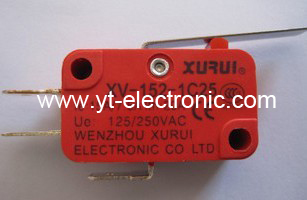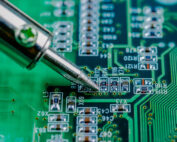Switches
As a basic component, switches assume key control functions in communications, electronic equipment, and complex systems, and their technical forms continue to evolve with application needs.
1. Switches Overview
Basic function: Control the conduction and disconnection of current by mechanical or electronic means to realize the opening and closing of circuits or path switching.
Technical characteristics: Its actions only focus on the circuit connection status and do not involve the transmission content itself. For example, traditional telephone switches establish communication links through physical switches and disconnect them immediately after completion.
2. What are Switches Used for?
Communication system
Circuit switching networks (such as traditional telephone networks) rely on switches to achieve real-time connections between users and complete signal transmission through trunk lines.
Although modern packet-switching technology uses similar physical architectures, it uses different protocols and switch types.
Electronic device control
Commonly found in circuit boards, used for power management, signal switching, and other functions, such as mechanical key switches or electronic MOSFET switches.
3. What are the Related Components of Switches?
Relays: Use electromagnetic principles to control the on and off of high-power circuits, suitable for scenarios where strong/weak currents need to be isolated.
Connectors: Used in conjunction with switches to ensure the reliability of physical connections between circuit modules.
4. What is the Technological evolution of Switches?
In the early days, pure mechanical structures (such as toggle switches) were used and gradually developed into integrated electronic components (such as optocoupler isolation switches).
Specialized switching devices (such as PCIe Switch) have been derived in the field of high-performance computing to expand data transmission channels, but their essence is still based on on-off control logic.
5. Typical Brands for Switches
Schneider
Siemens
Omron
Phoenix
MOSO
6. Switches FAQs
1) What are the Common Types of Switches?
Mechanical: touch switch, relay, etc., which control on and off through physical contacts;
Semiconductor: MOS tube (divided into N-channel/P-channel), thyristor, etc., which use electric field effect to realize contactless switch.
2) How to Choose the Core Parameters of MOS Tube as a Switch?
Vᴅss (maximum drain-source voltage): needs to be higher than the actual working voltage and leave a 20% margin;
Vɢs (gate-source voltage): controls the conduction threshold and needs to match the driving circuit level.
3) How to Determine the Polarity of MOS Tube?
Parasitic Diode Direction: The N-channel points from S pole to D pole, and the P-channel is the opposite;
Channel Type Determination: the symbol arrow points inward for the N-channel, and vice versa for the P-channel.
4) What are the Advantages of Semiconductor Switches in High-frequency Circuits?
MOS tubes and other semiconductor switches have no mechanical contacts and fast response speed (nanosecond level), which are suitable for high-frequency signal switching and PWM voltage regulation scenarios.
5) How to Use Switches to Achieve Digital Circuit Logic Control?
By combining mechanical switches with logic gates (such as AND gates and OR gates), simple logic functions can be constructed, such as using a dip switch to set the input level and control the LED display status.
6) What are the Characteristics of Thyristor (SCR) as a Switch?
A Thyristor is a semi-controlled semiconductor switch. After being triggered, it remains on until the current returns to zero. It is often used in AC voltage regulation, motor control, and other scenarios that require continuous conduction.





